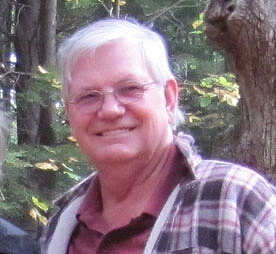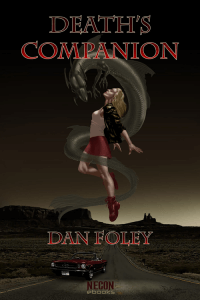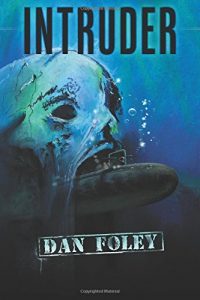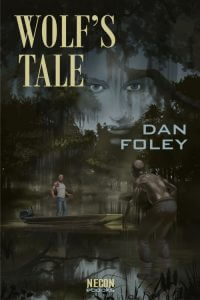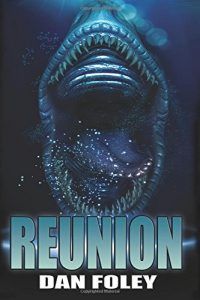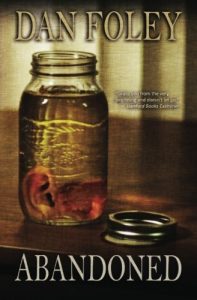20+ Questions: Ash Krafton
 I first encountered Ash Krafton on Querytracker.net, which is pretty much what it sounds like – a site that provides a great resource for authors querying agents and publishers to keep track their various queries and exchange information about agents, publishers and markets. As we were both interested in Urban Fantasy, Ash and I exchanged a few chatty emails, and then proceeded to lose track of each other. A year or two later, I was working for Pink Narcissus as their art director and occasional editor, and the Editor-In-Cheif sent me a manuscript she was considering accepting. Knowing I was more into Urban Fantasy than she was, she wanted my opinion. Once I read through Bleeding Hearts (Book One of the Demimonde), I wasted no time adding my vote to the “yes” column.
I first encountered Ash Krafton on Querytracker.net, which is pretty much what it sounds like – a site that provides a great resource for authors querying agents and publishers to keep track their various queries and exchange information about agents, publishers and markets. As we were both interested in Urban Fantasy, Ash and I exchanged a few chatty emails, and then proceeded to lose track of each other. A year or two later, I was working for Pink Narcissus as their art director and occasional editor, and the Editor-In-Cheif sent me a manuscript she was considering accepting. Knowing I was more into Urban Fantasy than she was, she wanted my opinion. Once I read through Bleeding Hearts (Book One of the Demimonde), I wasted no time adding my vote to the “yes” column.
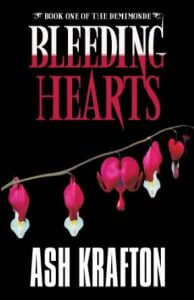 It was a real pleasure to be able to create covers for the three books of the series. Incidentally, the cover for the first book, Bleeding Hearts, was the first cover collaboration with my Corvid partner, Moira Ashleigh, who took the photograph of the flowers of the bleeding heart plant (Lamprocapnos spectabilis).
It was a real pleasure to be able to create covers for the three books of the series. Incidentally, the cover for the first book, Bleeding Hearts, was the first cover collaboration with my Corvid partner, Moira Ashleigh, who took the photograph of the flowers of the bleeding heart plant (Lamprocapnos spectabilis).
CORVID DESIGN: You’re known, among other things, for your vampire trilogy, but one of your most recent is a sort of sideways take on the vampire concept, under the byline AJ Krafton. In The Heartbeat Thief, Senza takes not blood from her victims, but life energy in the form of heartbeats. What was it that you were able to explore with this approach to supernatural parasitism that you couldn’t do using a more traditional vampire mythology?
ASH KRAFTON: The concept was born entirely out of the setting of the story. Victorian England had strict rules on morality and modesty and personal interactions. Everything was measured on the Almighty Scale of Propriety.
Senza couldn’t be a vampire in the traditional sense. Biting someone would have broken every rule there was and she would have been exiled from society. Her existence revolved around her place in society so she couldn’t very well go skulking about at midnight, stealing blood from her sleeping contemporaries.
Besides, there is something innocent and romantic and seductive about the notion, that kind of pilferage she does in plain view of everyone. A touch, a smile, and she has a piece of you—but you just feel a little off-balanced. Perhaps it was her smile that staggered you so. Who is that girl that all faces turn to follow? What is the spell she cast?
CD: What made you decide The Heartbeat Thief needed a different byline?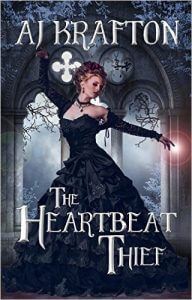
AK: As Ash Krafton, I generally write for adult audiences. Like most writers, I keep a perpetual story file in my head, ideas and plots and characters that I keep tucked away, waiting for a break between projects.
Several story ideas, however, featured younger protagonists and would be suitable for not-quite-yet-adult readers. I decided a pen name would be best to limit genre-confusion.
I am not convinced at this point if it was necessary, after all; mature teens 16 and up usually have no problems reading my stories (as well as inspire me to push my own limits in writing.) And the business aspects of a pen name are quite possibly a nightmare…but, anyhoo.
Because The Heartbeat Thief deals with violence, death, and the consequences of sexual activity, I decided to label it New Adult and use the pen name to establish the audience base. I have been told that it’s still YA friendly so…I guess it depends on the person reading it. In the end, the author picks the label…but once the book is in the hands of the reader, it goes where the audiences take it.
And I don’t think there is anyone who actually believes AJ is a different person. It was never a secret identity, after all.
CD: Thief takes place largely in the Victorian period, which I think is a departure for you. Were you already well versed in Victoriana, and only had to look up a few details, or was this huge research project? Tell us a little about your process with a period piece.
AK: This book was a joy to write because I’ve loved the time period from childhood. If I’m ever brave enough, I’m going to do a little bit of past life regression just to see where my past actually lived. I’ve had a crush on Poe since I was in high school so, ultimately, writing this book was a selfish indulgence.
That doesn’t mean I didn’t spend hours reading and researching, however. I think the only place where I dropped the ball was in two spots referring to horses, once literally and once metaphorically, for a total of maybe eight entire words. A reviewer who knows all there is to know about Horsedom was kind enough point out my incorrect wording. (By kind, I mean not kind. Doesn’t matter.) I accepted the criticism with a red face and a grateful heart and made immediate edits so the world would be safe once more from glaring inaccuracy in literature.
I think the biggest challenge came in the structure of the story itself. The plot followed the structure of “The Masque of the Red Death”, particularly the passage through the seven apartments. Senza, too, passed through seven “apartments” during her own long life. Each apartment had its own characteristics and colors and literary symbolism. The biggest challenge came in coordinating the historic timeline itself—years and events had to fall into place if I wanted the story to be believable.
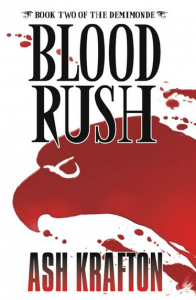 CD: Every author who deals with vampires seems to come up with their own unique take on the creatures, and have their own variations on the rules: Can they be out in sunlight? Do they react to crosses? Other holy symbols? Silver? Supernatural, or natural – are they actually risen dead, or humans with some sort of condition, or another race entirely? In the Demimonde books, your vampires are divided into the full vampires and the demi-vamps, hence the title of the series. Can you tell us a little about how that works, and where did you come up with the idea of the demivamps?
CD: Every author who deals with vampires seems to come up with their own unique take on the creatures, and have their own variations on the rules: Can they be out in sunlight? Do they react to crosses? Other holy symbols? Silver? Supernatural, or natural – are they actually risen dead, or humans with some sort of condition, or another race entirely? In the Demimonde books, your vampires are divided into the full vampires and the demi-vamps, hence the title of the series. Can you tell us a little about how that works, and where did you come up with the idea of the demivamps?
AK: “The Books of the Demimonde” series focuses on a woman named Sophie, an advice columnist-turned-oracle whose destiny is to be the redemption of the Demivampire. Since she actually has to redeem them, I had to create a mythos in which being vampire wasn’t necessarily a death sentence. (Hmm. That was a little punny. Won’t happen again.)
CD: Won’t happen again? I find that hard to believe…
AK: …I also wanted a hero that had a pulse, a normal body temperature, a man who wouldn’t feel like laying on a chilly waterbed. Vampires, I imagine, have no regulated body temp and would be cold-blooded. (Could have been punny, but wasn’t. This time.)
The most enjoyable part of creating the demivampire mythos was writing the origin story itself—which I happily rooted in Ancient Egypt. In Bleeding Hearts, Marek, a Demivampire, has a keen interest in Ancient Egypt. In fact, our heroine Sophie first meets him in a museum exhibit of an Old Kingdom temple.
Ancient Egyptians worshipped many gods, each of whom had many qualities. People related to their strengths and flaws, and devoted themselves to the divinity of the gods. I myself believe we are made in the image of the Divine—and that reflection of Divinity within myself endears me to God, whoever he or she or they are. I suppose the Egyptians felt the same way, since their gods were depicted with human bodies. The animal heads were indicative of their divine aspect.
Horus is the son of Osirus and Isis and is one of my favorites. Horus is depicted as having the head of a falcon, usually a peregrine. Very appropriate for the God of the Sky.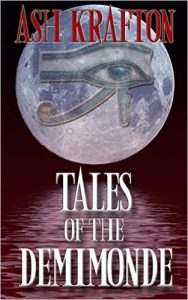
In my research, I came across the description of Horus’ eyes. That caught my interest, because the power of a demivamp had a great deal to do eyes and their color. The ancients said that, as God of the Sky, one eye of Horus was the sun and the other was the moon.
Hmm…sun and moon…vamps and werewolves…of course!
So, long story short, this story was pretty much all laid out about four thousand years ago. I’m just the one who put all the ancient clues together.
CD: Thief seems like a very stand-alone novel. Yet I couldn’t help wondering, is there a “Krafton Universe?” Could Senza or Tam Kerish run into Sophie if they happened to be in the right place and time? Or do you think of those each as self-contained works?
AK: I don’t see so much a Krafton Universe as I do a Krafton Theme Park. (That was wretchedly punny.) A few themes reappear in just about everything I write.
Death. Life. Magic. Redemption. Darkness and Light.
I don’t think characters can cross over because each book or series is meant to explore these themes through the lives and stories of different individuals. I want to capture unique experiences that, ultimately, are relatable to everyone, no matter the setting, the culture, or the approach of each story’s individual cast.
CD: So far, all your published works seem to be urban fantasy or paranormal romance. What about other genres? Do you plan to branch out? Is there a genre you’ve been jonesing to get around to trying? Or, conversely, is there one you’d never want to write in?
AK: When I daydream, I daydream about magic in the real world. A basis of actual realism makes me appreciate the unreal all the more. My first (unfinished) novel project was more fantasy-land fantasy, that generic kingdom-far-away kind of place. I liked the story, but I just wasn’t in it into it, if that makes sense.
Bleeding Hearts pulled me into its world because I based it near Philly, my old home. I wrote it because I wanted to walk down near the harbor and sneak looks at people and wonder if I saw their eyes flash. With The Heartbeat Thief, I imagine readers brushing against someone’s skin and thinking “Ooh…I nicked a beat!” I love the thought of real magic in the real world.
Urban fantasy lets me do that—make stuff up I can semi-convince myself is real so the books don’t end with the words THE END.
CD: You’ve published with small presses, and have self-published as well. What, for you, have been the major advantages and disadvantages of each?
AK: I like the validation of small press publishing, the senses of quality and solidarity. I like the artisanal aesthetic many small presses put out. I like the feeling of craft vs. mass production. But I also like self-producing my work because I enjoy the creative control. I’m not locked in a room, solitary and cut-off from the world, tossing out a story without having it vetted. Self-pubbing authors have access to a vast wealth of professionals they can contract in for services…editors, artists, formatters…kind of like a small press with a staff of one. Me 🙂
I also respect the balance of hybrid authors, who use elements of both traditional and self-publishing to ultimately market and present their brand. While I consider myself an indie author, I value the services of literary agents because they are experts in areas I myself am not and have connections and insights to parts of the business that I’d love to explore but know I can’t accomplish on my own.
CD: You’ve recently begun publishing a new series (“The Demon Whisperer”) on Wattpad. How has that worked out? Would you recommend Wattpad to other writers?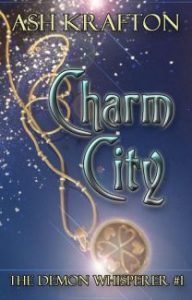
AK: I LOVE Wattpad.com. Up until recently, I used it to put up short stories just to see if anyone would read them. I love the forums because it’s a global community of novice and working writers. It’s nice to be “around” people who write because they are passionate about the essence of writing.
When I decided to put up Charm City (The Demon Whisperer #1), I had a specific goal: I wanted to shoot for a spot on the Featured Story list. To my delight, it was picked up and went Featured at the end of April. Since then, it’s been read about 17,000 times and has really sparked interesting responses from readers. My favorite comments are from people who are reading and thinking “out loud” as they go. The excitement is contagious!
As a Featured Story, it must stay on the site for a minimum of six months. I don’t foresee myself taking it down after that, even after I release the ebook. Wattpad is a great discoverability site and hopefully it will lead new readers to my other work.
Here’s a link to Charm City…have a look!
CD: You’ve said you’ll never leave the coal region “because coal is just another example of a spectacular ending waiting for a brilliant beginning. (It’s kinda fitting.)” For those of us who aren’t from coal country, would you mind explaining that?
AK: Coal is a black rock formed from prehistoric ooze and organic material that lies buried beneath tons of rock. The muck gets condensed into a hard, brittle layer that can be dug up and used for fuel because it burns with a semi-sustainable pace.
Coal forms because long ago, things died and ended. Yet, today, we still scratch the Earth and plow up mountains of the black diamonds. That coal will wait for someone to strike a light, so it can come blazing back in a whole new way.
The imagery is sooty, yet powerful and very inspiring. Who looks at a dirty rock and thinks, this is worth something…this will burn and create tons of energy?
But that’s what coal does. That’s what we all should do: use our experience and our past to illuminate and fuel the future.
CD: According to Amazon, “The second bravest thing she’s ever done was volunteering to go first when her Girl Scout troop visited a High Ropes challenge course somewhere back in the eighties.” Did you go on to become an avid high ropes fanatic, or was that your one and only encounter with it?
AK: Avid? Ha, ha, ha, NO. Terrified and point-of-no-return are better terms. I haven’t been on a ropes course since that day.
I have, however, bottled that feeling and kept it with me. The terror that couldn’t hurt me because I was harnessed and tied six ways to Sunday… The point of no return that made me step out, step forward, into what looked like empty air, to take a chance and challenge myself and not fall…
These days, I’m too old for rope courses. I’m more like a two-feet-on-the-ground and no-sudden-movements kind of girl. But every now and then I do something that makes me feel that way, all over again. It’s good to keep the blood thumping.
CD: Your website lists your next projects as Takin’ it Back and Face of the Enemy – are those period pieces, also? Can you tell us anything about them?
AK: These are two AJ Krafton titles. Takin’ it Back is an urban fantasy/ magic realism story about a girl who’s a Repo Guy for a magical artifact shop. Face of the Enemy is a dystopian magic realism about politics and illegal magicians and the effects both have on society in general and a young woman in particular. Both are in progress.
CD: To wrap up, we’re going to steal an idea from Inside the Actor’s Studio (who in turn stole it from the French TV series, Bouillon de Culture, so we don’t feel too bad about that), and pose the famous ten questions from Bernard Pivot:
– What is your favorite word?
A vulgar one. Can’t help it. I’m a goon.
– What is your least favorite word?
“Decimate”. Really, people, stop saying it. Most of you use it wrong and it drives me out of my fricken gourd.
– What turns you on creatively, spiritually or emotionally?
Music. It’s my muse, my inspiration.
I even did a recent stint on Sirius XM Radio’s Ozzy’s Boneyard as their Ultimate Sinner. One day I’ll edit up some video and post the show on YouTube. I had such a fricken blast doing that show. How many people get to say I’M LOCAL AUTHOR ASH KRAFTON AND, THIS WEEK, I’M THE ULTIMATE SINNER! Specifically, just me, I guess, but you know what I mean.
– What turns you off?
Racist jokes and prejudiced comments.
– What is your favorite curse word?
You mean, a vulgar word? *rubs hands together with sinister glee* And besides all of them? I have a mouth like a longshoreman.
If I have to pick one, it’s “Scheiße”.
Curse words, by comparison, actually curse people. I try not to do that in real life. Even if I’d like to tell a few of my dayjob retail customers to kiss my ass and go to Hell, I’d really hesitate before doing that. Scheiße like that can come back on you.
– What sound or noise do you love?
Music. Machine-gun guitars from Pantera’s Cowboys from Hell. Or that lolloping bass you hear in a lot of Iron Maiden songs. Or Geddy Lee singing. #iheartgeddy
Oh, and of course, the voices of my husband and children. Duh. I meant to say that first. *weak chuckle*
– What sound or noise do you hate?
Tinnitus. I have permanent ringing in my ears so it really messes with me. I used to think it was cool but then it didn’t go away. Now, it’s annoying and I really would rather it just shuts up.
– What profession other than your own would you like to attempt?
I wanted to say something like: a whorehouse madam, where the whores are actually all novelists and people come and give them quickie writing jobs to do. I think part of me wishes for a world where writers can make money doing free-lance work outside of their craft’s passion and not feel dirty about it or hate themselves in the morning for doing what they had to do for the sake of earning a buck.
But then I realized that it’s a pretty harsh thing to say, so instead I’ll pick… espionage. I want to be a spy like Melissa McCarthy’s character. LOVE. THAT. WOMAN.
– What profession would you not like to do?
Anything that requires physical grace or hand-eye coordination. Like I said, too old for that Scheiße. (Wow. I really got some great usage of my favorite vulgar word today. Yay me!)
– If an afterworld exists, what would you like to hear the deity of your choice say when you arrive there?
Nothing but the slap of a high five.
That’s my endgame—to live my life in such a way that, when I die, I can congratulate myself on a job well done. (And maybe spend eternity in a beer garden in Munich.)
CD: Thanks for taking the time to talk to us.
AK: That was seriously fun…
Much joy and cheers and thanks!
Find Ash Krafton on the web:
Website Blog Facebook Google+ Twitter Amazon Goodreads


